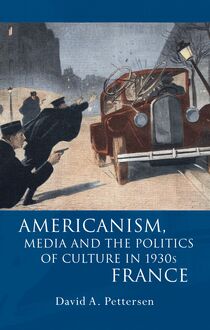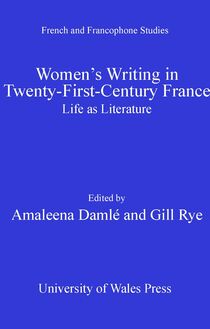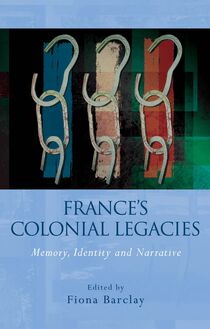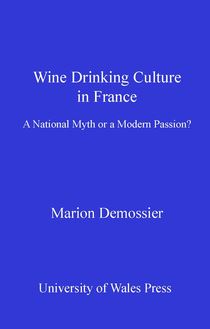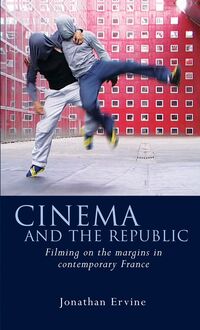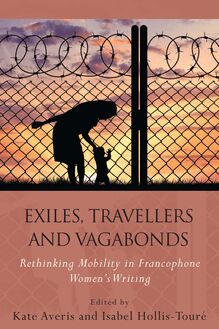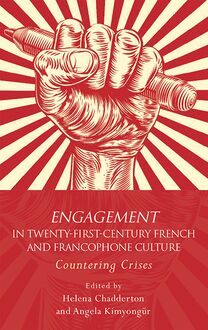French Fiction into the Twenty-First Century , livre ebook
127
pages
English
Ebooks
2010
Vous pourrez modifier la taille du texte de cet ouvrage
Obtenez un accès à la bibliothèque pour le consulter en ligne En savoir plus
Découvre YouScribe en t'inscrivant gratuitement
Découvre YouScribe en t'inscrivant gratuitement
127
pages
English
Ebooks
2010
Vous pourrez modifier la taille du texte de cet ouvrage
Obtenez un accès à la bibliothèque pour le consulter en ligne En savoir plus
Publié par
Date de parution
01 juillet 2010
Nombre de lectures
0
EAN13
9781783164158
Langue
English
Poids de l'ouvrage
1 Mo
Publié par
Date de parution
01 juillet 2010
Nombre de lectures
0
EAN13
9781783164158
Langue
English
Poids de l'ouvrage
1 Mo
FRENCH AND FRANCOPHONE STUDIES
French Fiction into the Twenty-first Century
Series Editors
Hanna Diamond (University of Bath)
Claire Gorrara (Cardiff University)
Editorial Board
Ronan le Coadic (Université Rennes 2)
Nicola Cooper (Swansea University)
Didier Francfort (Université Nancy 2)
Sharif Gemie (University of Glamorgan)
H. R. Kedward (Sussex University)
Margaret Majumdar (Portsmouth University)
Nicholas Parsons (Cardiff University)
Max Silverman (University of Leeds)
French Fiction into the Twenty-first Century
The Return to the Story
Simon Kemp -->
UNIVERSITY OF WALES PRESS CARDIFF 2010
© Simon Kemp, 2010
All rights reserved. No part of this book may be reproduced in any material form (including photocopying or storing it in any medium by electronic means and whether or not transiently or incidentally to some other use of this publication) without the written permission of the copyright owner except in accordance with the provisions of the Copyright, Designs and Patents Act 1988 or under the terms of a licence issued by the Copyright Licensing Agency Ltd, Saffron House, 6-10 Kirby Street, London, EC1N 8TS. Applications for the copyright owner s written permission to reproduce any part of this publication should be addressed to the University of Wales Press, 10 Columbus Walk, Brigantine Place, Cardiff, CF10 4UP.
www.uwp.co.uk
British Library Cataloguing-in-Publication Data
A catalogue record for this book is available from the British Library.
ISBN 978-0-7083-2273-4
e-ISBN 978-1-78316-415-8
The rights of Simon Kemp to be identified as author of this work has been asserted by him in accordance with sections 77, 78 and 79 of the Copyright, Designs and Patents Act 1988.
The publisher has no responsibility for the persistence or accuracy of URLs for any external or third-party internet websites referred to in this book, and does not guarantee that any content on such websites is, or will remain, accurate or appropriate.
Cover image: The Millau Viaduct, Aveyron, opened by Jacques Chirac on 14 December 2004. Photograph: Reuters/Jean Philippe Arles
For Elizabeth Fallaize, with gratitude
Contents
____________________
Series Editors Preface
Introduction
Chapter One: Annie Ernaux and the Narrating of Time
Chapter Two: Pascal Quignard and the Fringes of Narrative
Chapter Three: Marie Darrieussecq and the Voice of the Mind
Chapter Four: Jean Echenoz and the Uses of Digression
Chapter Five: Patrick Modiano and the Problem of Endings
The Return to the Story
Notes
Select Bibliography
Series Editors Preface
____________________
This series showcases the work of new and established scholars working within the fields of French and francophone studies. It publishes introductory texts aimed at a student readership, as well as research-orientated monographs at the cutting edge of their discipline area. The series aims to highlight shifting patterns of research in French and francophone studies, to re-evaluate traditional representations of French and francophone identities and to encourage the exchange of ideas and perspectives across a wide range of discipline areas. The emphasis throughout the series will be on the ways in which French and francophone communities across the world are evolving into the twenty-first century.
Hanna Diamond and Claire Gorrara
Introduction
____________________
At the end of the 1980s a term began to crop up in the French literary press to describe a newly perceptible trend in fiction: le retour au r é cit , or the return to the story. One of the earliest appearances comes in a special issue of La Quinzaine litt é raire in May 1989 devoted to the question, Where is French literature heading? In his editorial, Maurice Nadeau figures the current literary scene as a collection of returns to literature s traditional concerns in the wake of a period of textual experiment and theoretical formalism: A return to history, a return to stories, a return to the subject (after the description of so many objects), a return to creation , a return to the work of literature , a return to characters, to plot, to story-telling. From now on we have every freedom. 1 The periodical asks a number of authors to comment on the phenomenon, and finds them broadly agreeing on its existence, although sometimes with certain provisos. Renaud Camus, for instance, replies:
Everyone is more or less in agreement about a return to the story , but the story isn t an unambiguous meeting-point for those, on the one hand, who never left it, and for those, like me, who went a little way out to see, from the outside, what it was made of it, and what might be made of it yet. 2
The concept is quickly taken up by criticism discussing l extrême contemporain , a topic which has only relatively recently been considered appropriate for academic study in France. Aron Kibédi-Varga writes in 1990: What is perhaps most deeply characteristic of the new postmodern literature is the renarrativization of the text, the effort to construct stories once again. 3 I n the same year, Jean-Claude Lebrun and Claude Prévost critique the term, noting, as Nadeau did before them, that such a return need not imply a retreat to a Balzacian model of storytelling, and expressing a preference for the expression retou r du r é cit a s better encapsulating a sense of reinvestment in a broadened tradition, which can encompass Faulkner and Proust, Diderot and Sterne . 4 I n 1991, Jean-Michel Maulpoix s history of recent French literature comments under the heading, Le Retour du Récit :
Throughout this decade [the 1980s] we nevertheless see a return to grace of narrative and fiction in the novel. No longer perceived as artificial and gratuitous diversions (as the New Novelists attacked them for being), they are now seen as bringing to life an imaginary universe, within which it might be possible to question and newly comprehend the meaning of the world. 5
In the years since then, the concept has flourished in French criticism, crystallizing around the term retour au r é cit at the expense of alternative formulations. Le retour au r é cit features in the titles of articles or book chapters by Dominique Viart, Anne Cousseau and Dominique Combe. 6 It is the focus of discussion in a host of other texts, including criticism by Marie-Claire Bancquart and Pierre Cahné, Yves Baudelle, Bruno Blanckeman, Olivier Bessard-Banquy and Henri Godard. 7 Anglophone criticism too has picked up on the idea: it appears, for instance, as the return of storytelling in Colin Davis and Elizabeth Fallaize s French Fiction in the Mitterrand Years . 8
The return to the story is now a commonplace in the analysis of contemporary French literature, so much so that it approaches the status of a received idea, propagated from critical text to critical text, often without being interrogated as to its precise meaning or its possible hidden assumptions. My own investigation intends to explore French literary fiction of the late twentieth and early twenty-first century in order to evaluate the term. What exactly is this r é cit that we are returning to? Where are we returning from? How might we go about judging comparative degrees of story in different texts? If there is indeed a return to the story, then what cultural or other forces might have caused it to happen? These are the questions I shall be attempting to answer through the close study of narrative form in the work of five notable and very different French authors of the last thirty years.
There is consensus among critics on what it is we are returning from. Pierre Brunel describes the 1980s and 1990s as:
the period in which we generally see an ebbing away of the avant-garde thrust of the three previous decades, and in particular of that extreme and extremist avant-garde of the 1970s. The Sollers of Nombres, H , or Loi s become s more relaxed and better behaved in Femme s o r Portrai t d un joueur . Robbe-Grillet becomes an autobiographer while continuing to work through fiction. A new generation of writers receives the legacy of the recent experiments in the novel, while at the same time seeking to differentiate themselves. 9
Viart expands on this account with a sketch of the state of affairs in the 1970s which brought on the return:
The experimental and textualist practices which dominate the literary scene at the end of the 1970s reached their limit. Even the idea of a novel was discarded in favour of the more general notion of a text … Books like these [including those by Philippe Sollers, Renaud Camus, Pierre Guyotat and Maurice Roche] verged on the unreadable and no longer found an audience. The ideology of the new led writers to outdo one another, and in the end had no legitimacy other than its innovative aspect, independent even of what it might have to say. Any aesthetic that calls itself avant-garde posits a need for rupture with old forms . Getting rid of this one-upmanship means finishing with such practices. This is the major event of the last two decades of the century. 10
The rise of the experimentalists to which Brunel and Viart refer dates back to Jérôme Lindon s assembly of the é cole de Minuit at his publishing house in the early 1950s: Samuel Beckett, Marguerite Duras and the nouveaux romanciers , Alain Robbe-Grillet, Nathalie Sarraute, Claude Simon, Michel Butor, Robert Pinget, Claude Ollier and Jean Ricardou. The influence of the latter group in particular, who accompanied their fiction with often highly polemical theoretical essays, was instrumental in shifting the cultural dominant away from the Catholic novelists and politically committed writers of the earlier generation towards a self-referential form of writing in which, to borrow Ricardou s famous formulation, the writing of adventures would be replaced by the adventure of writing. 11
Experimentalism did not spring fully formed from nowhere, of course, and the Minui t writ



